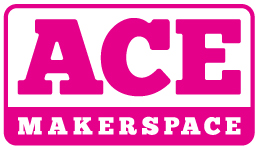Because of insurance requirements this welder can not be used at AMT, and it can not be loaned out to members. The plan as of 11/14/2019 is to sell it.
It is currently located at Department of Spontaneous Combustion.
It is a Lincoln Electric Weld-Pak 175HD. The user manual can be found at
https://www.lincolnelectric.com/assets/servicenavigator-public/lincoln3/imt825.pdf
[[File:Weld.JPG|thumb|right|300px|Weld.JPG]]
Overview
 Loading asset information.
Loading asset information.
The welder has moved and is now located at the [Dead link https://www.acemonstertoys.org/satellite-metalworking/ Department of Spontaneous Combustion].
ALL WELDING MUST BE DONE OUTSIDE THE AMT BUILDING. WELDING MAY NOT BE DONE ANYWHERE IN THE INTERIOR OF THE SPACE. EVER. FOR REALS. The welder cannot be used anywhere inside of 6050 Lowell St. You can borrow it, and use it someplace else if you like. Only members who know how to operate the welder safely are allowed to borrow it.
The Check Out Process
- The Welder can be checked out from the DSC for up to 2 weeks but needs to scheduled around the welding classes listed on the calendar.
- The Welder can be checked out from the DSC on Tuesday evenings during their open house or by appointment ([email protected])
- You must show your AMT member profile at time of pick up on the AMT Member Directory. They will not give the welder to anybody but active AMT Members.
- You must update the status at time of pick-up and drop-off using the asset reporting system either Slack or the [Dead link
https://www.acemonstertoys.org/tool-and-equipment-status/Equipment Tool and Status Page]. For more informaiton about reporting on equipment see this blog post.
We have a Lincoln Electric Weld-Pak 175HD welder. This is apparently an old enough model that it’s not listed on lincolnelectric.com. The best I could find are the [Dead link http://www.lincolnelectric.com/Assets/ServiceNavigator/Lincoln1/P486.pdf parts list] and operation manual. You can also find a copy of the manual here [[Media:Imt825_AMT_Welder.pdf]]
This welder is an electrical arc type welder – the metal is melted via heat from an electrical arc. HIGH VOLTAGE and HIGH CURRENT – it is dangerous from heat, from light, and from electricity! It’s also a wire feed welder; that is, when you pull its trigger, wire is pushed out into your weld to be used as fill metal. It can be used to weld unshielded with flux core filler wires, or in MIG mode with various Argon/CO2 shielding gases. (Please refer to the operation manual for gas and metal gauge specs.) Currently it is loaded with flux core wire.
The welder plugs into the three phase plug as it requires 220V power. This is different from a regular 110 outlet – if you want to borrow the welder, check your setup first to make sure you have the right outlet.
The welder comes with important welding accessories, including welding helmet and gloves.
Using the welder
This bit is for informational purposes only. It is NOT enough training to allow you to safely and successfully operate the welder. If you have never used the welder, you must be trained before doing any welding as there are very many serious dangers involved! AMT and DSC offer basic welding classes.
When welding, you must always wear safety equipment. The welder produces high temperatures, high electrical current, toxic fumes, and dangerously bright light. You must wear the helmet, respirator, and gloves at all times. You must also be aware of others in the vicinity and ensure they aren’t looking at the work area when you are working, as the light from the welder is bright enough to damage unshielded eyes.
In order to generate the heat required to make a weld, an electrical connection is required. A clamp connected to ground is attached to the piece to be welded. Then, when the trigger is pulled, the wire is electrified and pushed out of the gun. If the wire is touching the work, as is required to actually weld, the circuit is completed and very high levels of heat, current, and light occur. If the trigger is NOT pulled, there is no voltage differential between it and the clamp — although it may still be quite hot!
When welding, the operator must wear a respirator, helmet, and gloves to protect them. The clamp is placed on one of the metal pieces to be welded, somewhere out of the way from the actual area being worked on. The wire feed gun tip is brought close to the area to be welded, and the trigger pulled. Now current flows and arcs, and the metal melts. The wire is fully melted, and a part of the work on each side of the weld in progress is melted as well. How much should be melted, how much new material (wire) to leave, and a good pattern of movement are all skills a successful welder must learn.
For larger projects, the clamp may be attached directly to part of the work material. For smaller projects, a welding table can be used – a metal table that the clamp is attached to, and the work sits on, which becomes part of the circuit. If using a metal table, care must be taken not to weld the piece to the table.
Pledges for materials
We need a tank of shielding gas and some different wire to use the welder without gross, splattery welds. We’re starting a collection for the approximately $130 we need for the tank and a fill ($20 subsequent fills if we run out).
As of September 2015 this effort is not happening any longer. If anyone is interested in reviving it, please contact the metal shop [[Tool_Stewards|tool steward]].
